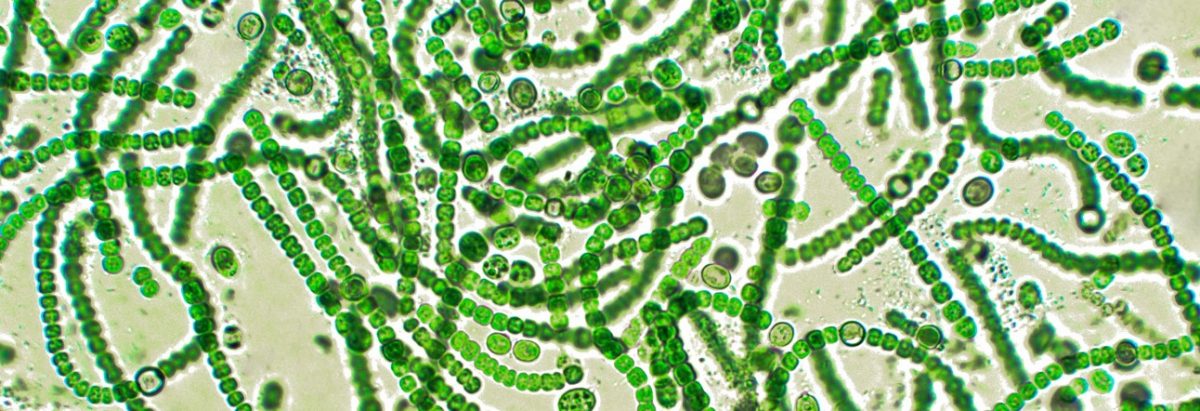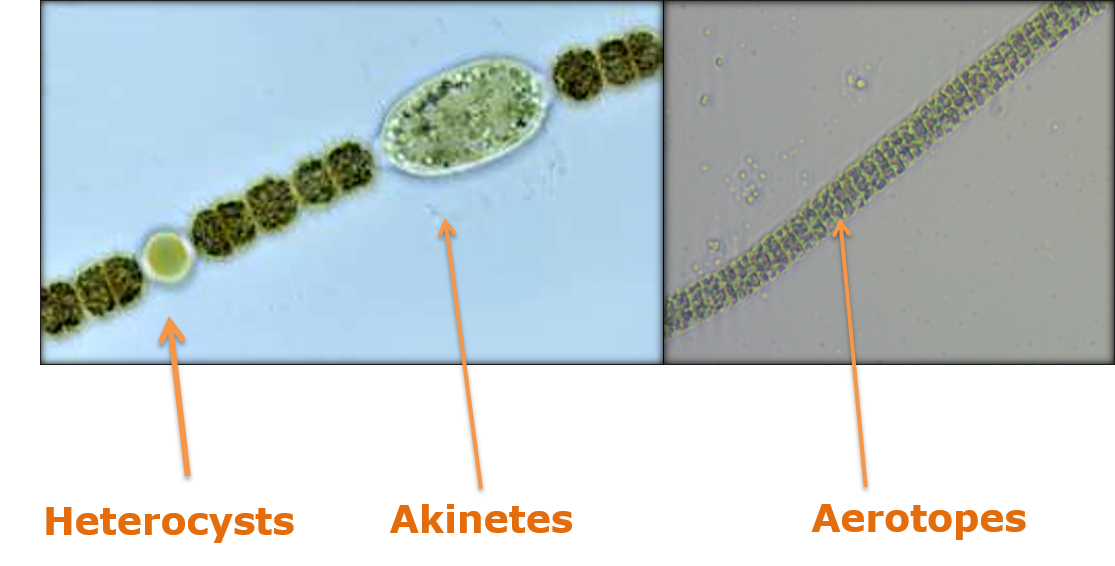What Are Cyanobacteria?

Cyanobacteria are free floating, microscopic organisms that are naturally found in reservoirs, lakes, and streams through out the world. Commonly, cyanobacteria are found in low numbers and don’t pose a threat. However, given the right conditions (visit the Causes page), cyanobacteria can grow at increasing rates that results in a bloom. Though they are quite small, they often grow in large colonies which can become the scums and green water that indicate a bloom is present.
Cyanobacteria, also known as blue-green algae, is commonly confused with algae because it shares traits with algae and bacteria (see below or click here). Since cyanobacteria perform photosynthesis through their green chlorophyll-a pigment and contain the bluish pigment, phycocyanin (used for photosynthesis), they are commonly referred to as blue-green algae. However, cyanobacteria is technically a bacteria and not algae because they are toxin producers (visit the Toxin Production page). But the presence of cyanobacteria doesn’t always pose a risk because not all blooms produce toxins at significant levels. Laboratory testing is the only way to ensure that water is safe.
Some cyanobacteria have the ability to adapt to the environment. This is a big factor in determining whether a bloom will form and where in the water column a bloom will form. Some adaptations allow for a bloom to occur up to three feet below the surface (subsurface bloom). Adaptations include:

- Heterocysts are specialized cells that can fix nitrogen in the air, which gives an advantage of thriving in low dissolved Nitrogen/Nitrogen limited environments.
- Akinetes are cells used for survival & reproduction. It is a spore-like cell capable of withstanding certain environmental extremes and of germination.
- Aerotopes allow the bacteria to regulate their own buoyancy to reach optimum depth in the water column where sunlight and nutrients are at their maximum.


